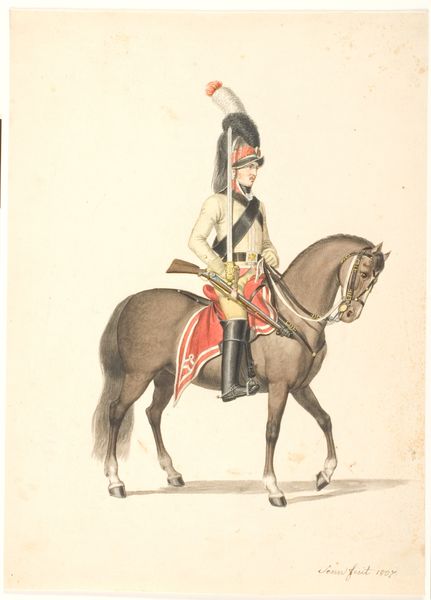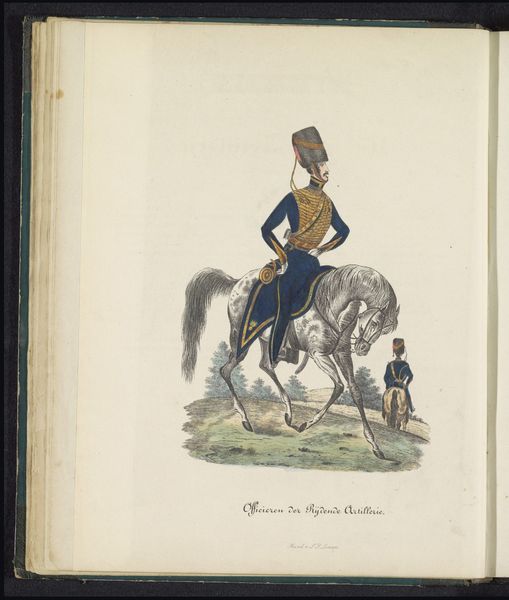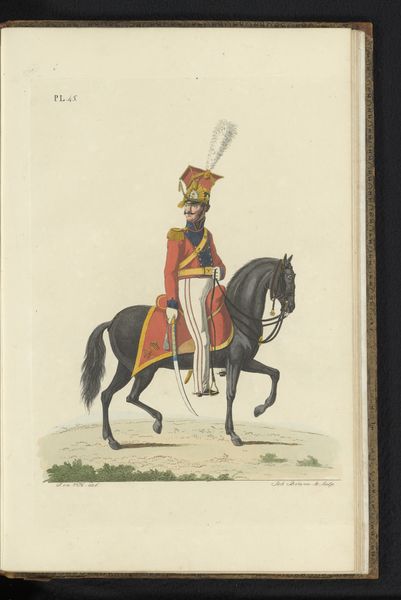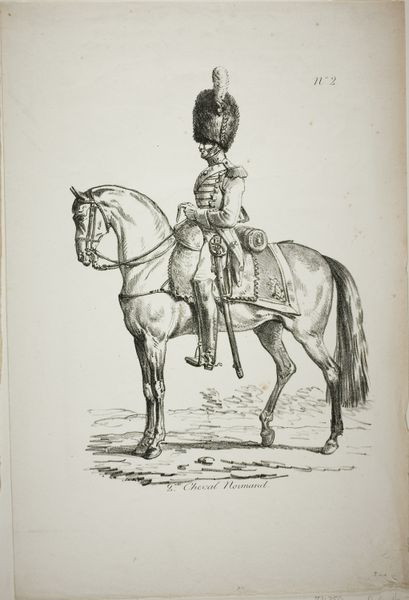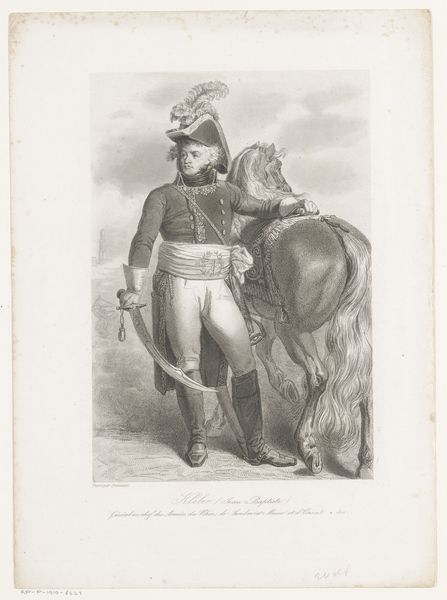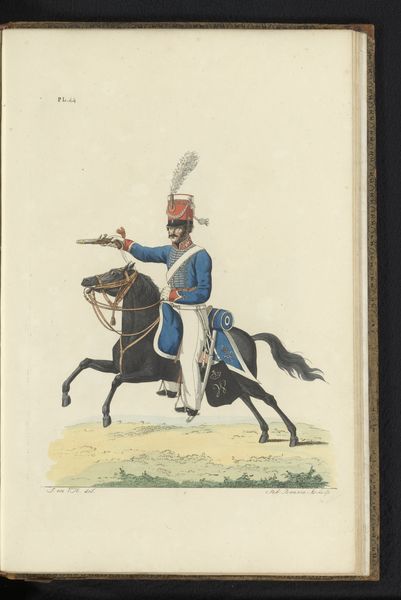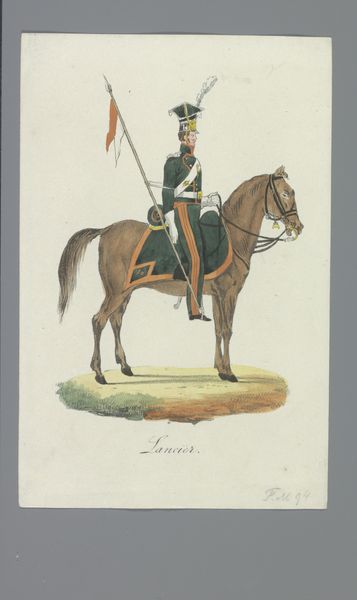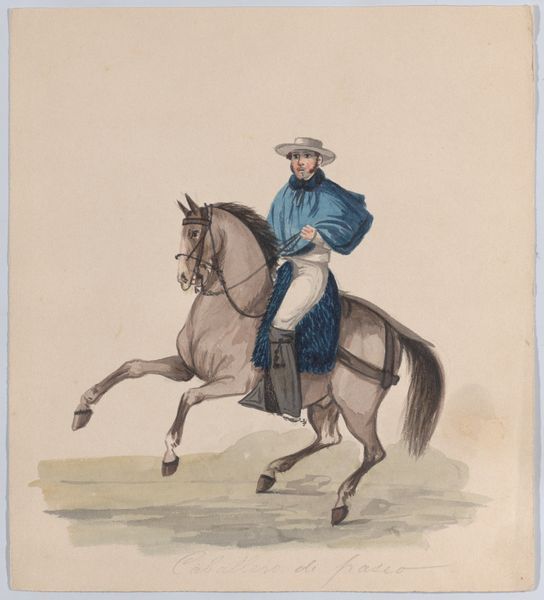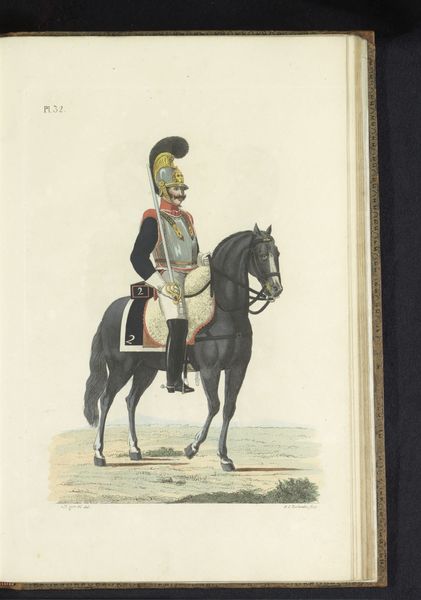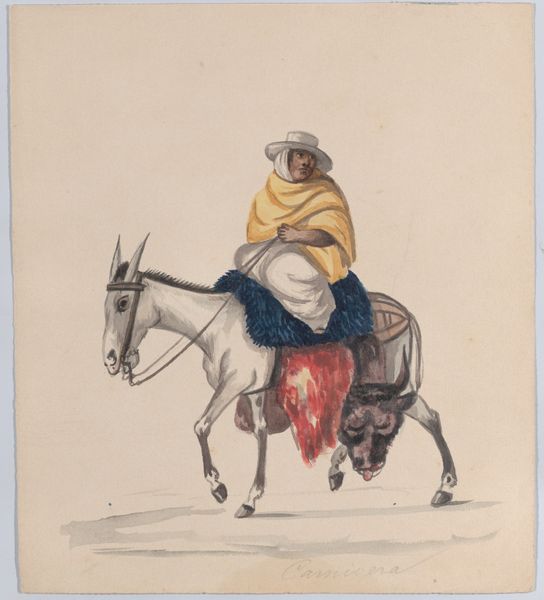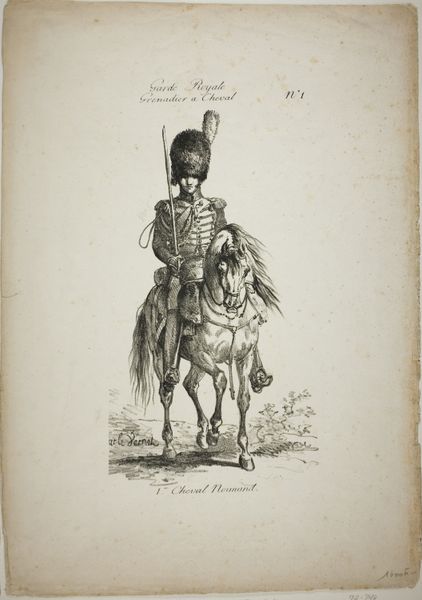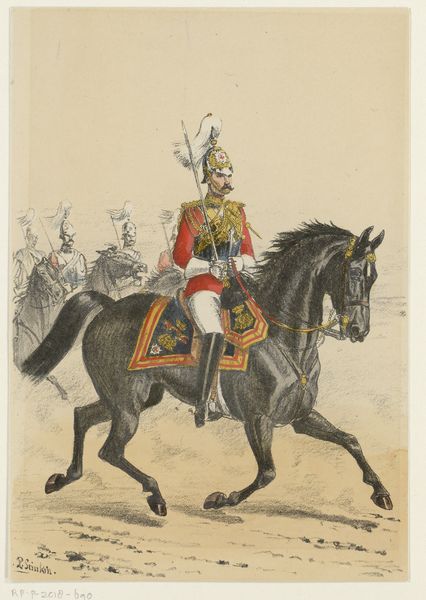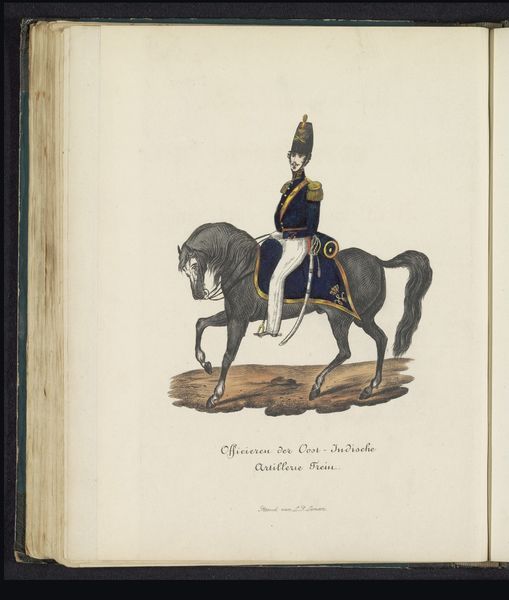
drawing, print, etching, paper
#
portrait
#
drawing
# print
#
etching
#
caricature
#
caricature
#
paper
#
orientalism
Dimensions: 298 × 261 mm (sheet, trimmed to plate)
Copyright: Public Domain
Curator: This drawing, titled "The Persian Ambassador," is by Richard Dighton. It’s an etching printed on paper, dating from an unknown period. It exudes an air of Orientalism. My first thought is the almost unsettling rigidity of the figures; it feels stiff, even theatrical. Editor: Indeed. The ambassador's posture is incredibly erect, bordering on caricature, which speaks to a specific Western gaze upon foreign dignitaries, particularly in this era. Note how the artist renders the horse’s anatomy—slightly awkward and not quite anatomically correct, suggesting a focus more on symbolic representation than realistic depiction. Curator: I agree. This exaggerated representation contributes to the feeling of caricature, a prevalent style in Dighton's time, often employed to critique or satirize public figures. However, looking deeper, the symbolic weight of the details emerges: the luxurious textiles draped on the horse, the ambassador’s high cap and full beard, all communicating an exotic "otherness." These visual elements are potent signifiers within the Western imagination, playing into established stereotypes. Editor: Let's consider the lines themselves. Notice how Dighton uses short, repetitive strokes to create texture, particularly in the horse's coat and the ambassador's beard. The controlled hatching suggests precision. Yet, the hand-coloring adds an element of levity, tempering what might otherwise be a stark, severe composition. It infuses the image with a gentle, almost whimsical mood. Curator: Precisely. The coloring isn’t about accuracy but rather enhancing the impression. Red sash, green coat… They reinforce this visual trope of opulent display connected with "the Orient" in Western art, simplifying a rich, layered history to appeal to immediate expectations and biases. The picture carries echoes of the theater, the world as stage, and identity presented and perceived, not entirely self-defined, loaded with the baggage of stereotypes that reflect cultural tension of this era. Editor: Absolutely. It reveals much about how Western society perceived and constructed its image of "the other," utilizing caricature and symbolism to simplify complex identities. In that, it acts as a very valuable record of past perspectives. Curator: It prompts us to ask how cultural memory and perception interact. Fascinating! Editor: An insightful exercise in historical semiotics!
Comments
No comments
Be the first to comment and join the conversation on the ultimate creative platform.

